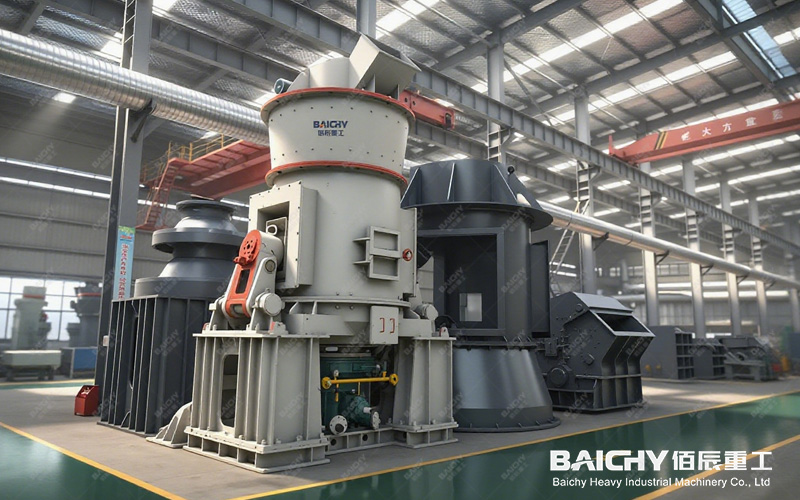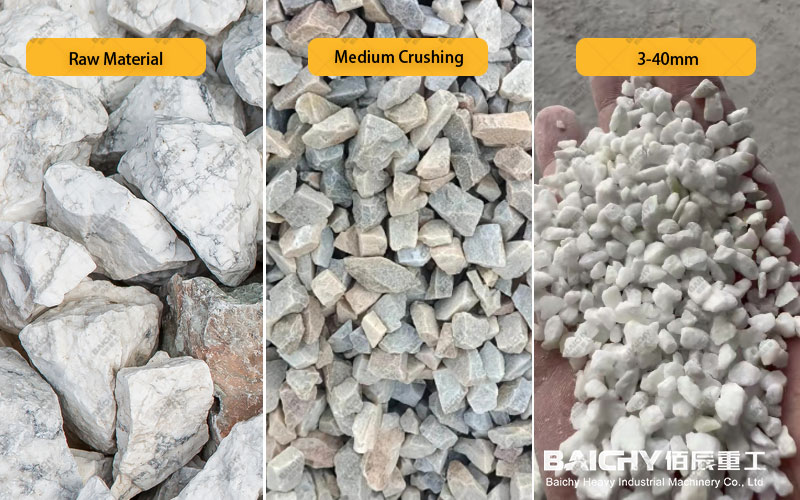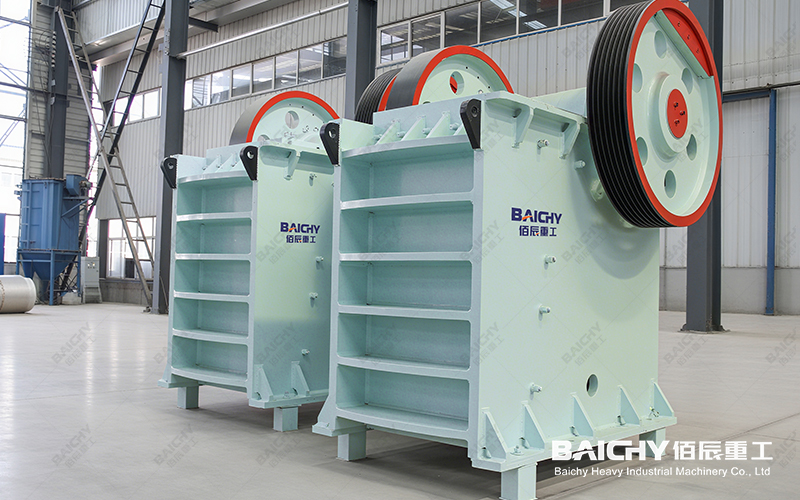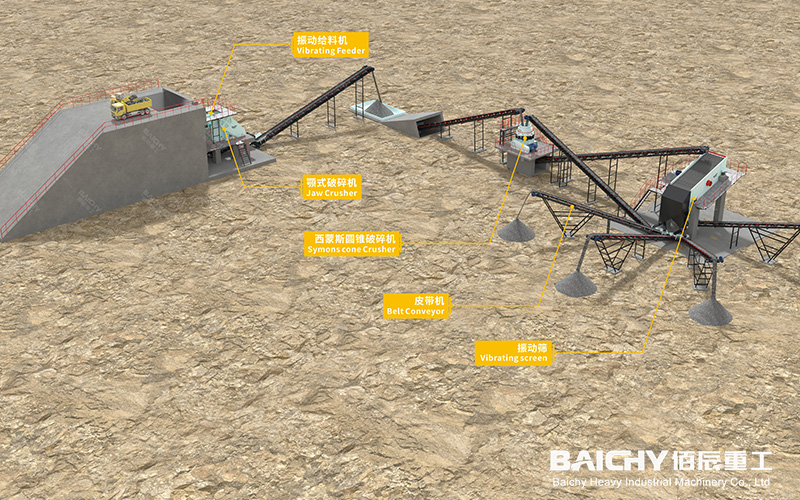
In the fields of cement production and slag processing, vertical roller mills (VRMs) have become the preferred equipment for modern grinding processes due to their high efficiency, energy saving, environmental friendliness, and low carbon footprint. Compared with traditional ball mills, VRMs have achieved significant breakthroughs in energy consumption control, material adaptability, and automation.
This article will delve into its working principle and technological advantages, focusing on its key role in cement and slag grinding, providing a reference for industry practitioners.
I. How Does a Vertical Roller Mill Work?
The core design of a vertical roller mill is based on the principle of bed grinding: material enters the grinding disc through the central feed inlet, disperses to the edges under centrifugal force, and is simultaneously crushed by the grinding rollers driven by a hydraulic system. The crushed fine powder enters the classifier for grading with the airflow; qualified products are collected, while coarse particles are returned to the grinding disc for further grinding. This closed-loop process achieves efficient and continuous grinding operations, especially suitable for hard materials such as cement clinker and slag.

II. Why Has the Vertical Roller Mill Become a Star Equipment for Cement and Slag Grinding?
1. Significant Energy Saving and Consumption Reduction
Vertical roller mills consume 30%-50% less energy than traditional ball mills. Utilizing bed grinding technology, energy is applied directly to the material layer, avoiding energy loss from the collision between steel balls and liners in ball mills. This advantage directly reduces production costs, especially in the high-energy-consumption grinding stage.
2. Outstanding Slag Processing Capacity
Slag is hard and poorly grindable, but vertical roller mills can flexibly control the grinding fineness by adjusting roller pressure and air velocity. Simultaneously, its built-in drying function allows for direct treatment of high-humidity slag using kiln exhaust gas, achieving integrated grinding and drying, and improving resource utilization.
3. Environmental Protection and Automation Combined
The equipment adopts a fully enclosed structure, resulting in low dust leakage. Combined with a pulse dust collector, the emission concentration can be <10mg/Nm³. The intelligent control system monitors mill vibration, temperature, and other parameters in real time, automatically optimizing operating conditions and reducing manual intervention.
4. Stable Product Quality
The cement or slag powder produced by the vertical roller mill has a uniform particle distribution and good sphericity, which is beneficial to improving the strength and workability of concrete. By adjusting the classifier speed, the fineness of the product can be precisely controlled (e.g., the specific surface area of slag powder reaches 400-600 m²/kg).

III. Innovative Application Case: From Slag Waste to Green Building Materials
A large building materials company uses a vertical roller mill to process blast furnace slag, converting industrial waste into high-quality slag powder, replacing 30% of cement clinker in the production of low-carbon cement. After the project was put into operation, it processes 1 million tons of slag annually, saving approximately 20 million kWh of electricity and reducing CO₂ emissions by 150,000 tons, highlighting the value of the vertical roller mill in the circular economy.
IV. Future Trends: Dual-Wheel Drive of Intelligentization and Low-Carbonization
With the popularization of Industry 4.0 technologies, vertical roller mills are upgrading towards digital twins, predictive maintenance, and other directions. For example, predicting the wear cycle of grinding rollers through sensor data and planning maintenance in advance can further reduce downtime losses. Simultaneously, integrating the equipment with photovoltaic and energy storage systems holds promise for achieving zero-carbon grinding, contributing to the green transformation of the building materials industry.
Vertical roller mills are not only a technological innovation in cement and slag grinding, but also a key support for the sustainable development of the building materials industry. Their high efficiency, environmental friendliness, and intelligent features are driving the transformation of traditional grinding processes towards a resource-saving model. For companies seeking to reduce costs and increase efficiency, investing in vertical roller mills is undoubtedly a crucial step in securing a competitive edge in the future.











